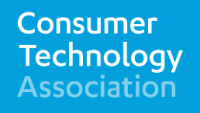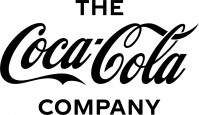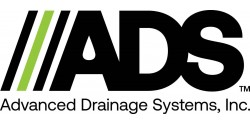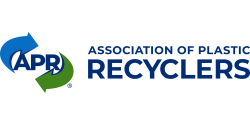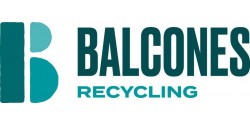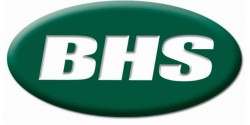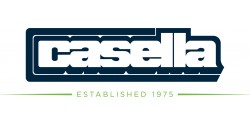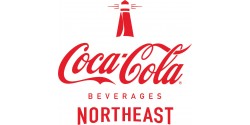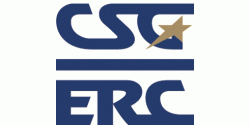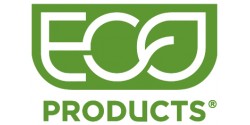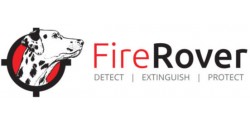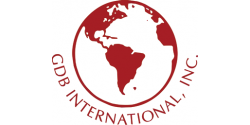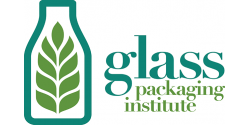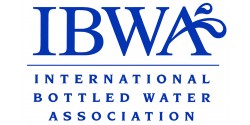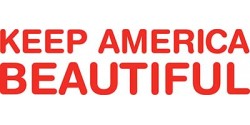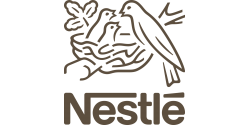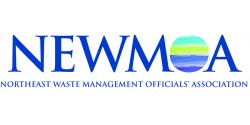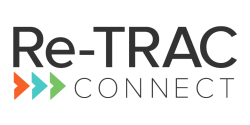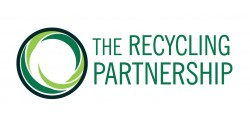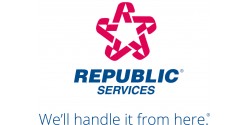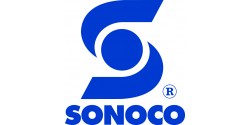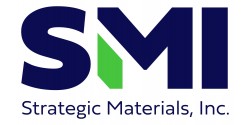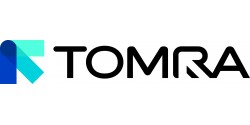December 2011
MEMBERSHIP
Renewing Supporting Members
- Council of State Governments Eastern Regional Conference
- Connecticut Resources Recovery Authority
NEW NERC RESOURCES AND DOCUMENTS
- Asphalt Shingles Fact Sheet Updated and Expanded
- NERC FY 11 Annual Report Now Available
- Fall Conference Presentations Available on NERC Website
NERC NEWS
- Environmentally Preferable Purchasing Listserv Moves to Yahoo!Groups
- A New Year's Resolution to Reduce Food Waste
- Source Reduction Through Reuse: Materials Exchanges
- Introductory Webinars for State Electronics Challenge – January and February
TOXICS IN PACKAGING NEWS
STATE UPDATE
Connecticut
- ESPN has its Team in the "Green" Game
- Green Grocer has a New Meaning
- DEEP To Launch Recycling Bin Lending Program
- Connecticut DEEP Recycling Sees Benefits of Social Media
- Debris Management Planning Proves Useful During Storm Clean-Ups
ADVISORY MEMBER NEWS
- WeRecycle! Assists with Disaster Relief in Flood Ravaged Areas of New York
- 3,000 Pounds of CDs, DVDs and VCR Tapes Collected from Special Recycling Event
OF GENERAL INTEREST
To join the EMail Bulletin list …
Send an email to executive.director@nerc.org making the request. Please be sure to include your full name and organization.
NERC's mission is to advance an environmentally sustainable economy by promoting source and toxicity reduction, recycling, and the purchasing of environmentally preferable products and services.
State and Advisory Member Updates, as well articles of General Interest are provided as submissions to NERC and may not reflect the policy or position of the Northeast Recycling Council, Inc.
NERC is an equal opportunity provider and employer.
MEMBERSHIP
We are delighted to welcome the Council of State Governments Eastern Regional Conference and the Connecticut Resources Recovery Authority as renewing Supporting Members.
A hallmark of NERC is the strength of multi-stakeholder involvement and problem solving. This is a direct result of the active participation and support of NERC's Advisory Members. NERC has almost 50 Advisory Members. To see a complete listing and the benefits of membership, visit the NERC Advisory Membership web page.
The broad spectrum of interests represented by NERC's Advisory Members and Board Members and their willingness to participate significantly contribute to the unique and important role that NERC plays in recycling in the region.
NEW NERC RESOURCES AND DOCUMENTS
Asphalt Shingles Fact Sheet Updated and Expanded
One of the most popular resources on the NERC Website is the asphalt shingles fact sheet. This resource has now been updated and expanded to include the most recent information about asphalt shingle recycling and manufacturing. For more information, contact Mary Ann Remolador, Assistant Director.
NERC FY 11 Annual Report Now Available
Fiscal year 2011 was another outstanding year for NERC. NERC is a remarkable organization. Despite all of the financial strains on government and business in the past year, NERC continues to grow. Nationally, there is increased attention to green industries and the role that recycling plays. NERC's mission — to promote economic and environmental sustainability through recycling — is central to the national discussion. NERC's staff and Board work diligently to affect change and progress in support of this mission.
During fiscal year 2011, NERC staff implemented nine grant-funded projects and three contract-based projects, in addition to holding a multi-day conference, a one-day workshop, and meetings of the Board of Directors. NERC also actively participated in the national carpet stewardship dialogue, and staff became members of the Boards of Directors of two national organizations: R2 Solutions and the Reuse Alliance. All of these activities were designed to address source reduction, reuse, increased recycling, organics management, enviromentally preferable purchasing, and climate change.
Ongoing efforts include: maintaining and enhancing the NERC Website; hosting the EPPnet listserv; producing the Email Bulletin; managing the national State Electronics Challenge; administering and staffing the Toxics in Packaging Clearinghouse; and adminstering the Electronics Recycling Coordination Clearinghouse.
All project results and related resources were posted on the NERC Website. For more details, see the FY 11 Annual Report.
Fall Conference Presentations Available on NERC Website
The NERC Fall Conference this year focused on electronics recycling markets and rigid plastics recycling markets. All the presentations are available for download on the NERC Website. For more information, contact Mary Ann Remolador, Conference Organizer.
NERC NEWS
EPPnet – the Environmentally Preferable Purchasing Listserv – Moves to Yahoo!Groups
EPPnet, the only national listserv dedicated to environmentally preferable purchasing, was created by NERC more than ten years ago. During that time, the internet has changed dramatically, as has how we use email. But you knew that! What you probably don't know is that EPPnet has transitioned to a Yahoo!Groups listserv.
EPPnet links federal, state, and local environmental officials, and private procurement specialists charged with purchasing green products and services and developing policies for the procurement of these products. EPPnet is intended to provide subscribers with quick access to information, such as: availability of product specifications, vendors of particular products, pricing information, and strategies to achieve recycled product procurement goals and federal procurement policies. Please note: Private vendors are precluded from joining the listserv.
EPPnet is a Yahoo! Group, and membership must be approved. To join the listserv go to http://groups.yahoo.com/group/EPPnet/ and click on "Join this Group!" You will be required to log into a Yahoo! Account. If you do not have one, you can set one up at that time, or sign in with Facebook or Google. You will be taken to a join form. In the "Comment to Owner" box, please be sure to describe your interest in EPPnet and your role in your organization. Your application must be approved by the NERC moderator. Once you are approved, you will receive a welcome message from Yahoo! Groups with detailed instructions on how to use the listserv.
An alternative way of joining is to email Athena Lee Bradley, letting him know of your interest in EPPnet, and your role in your organization.
A New Year's Resolution to Reduce Food Waste
Who doesn't enjoy a good holiday meal with family and friends? However, food abundance during the Thanksgiving to New Year holidays contributes to the general increase in waste generation during this period. This season of giving and reflection presents an opportunity to take a look at our food waste and what each of us can do.
It is estimated that in the United States about 27 percent of the food we produce for domestic sale and consumption is wasted.1 This figure, more than 34 million tons of food, amounts to some 14 percent of the total municipal solid waste stream. According to the EPA, food waste is the single largest component of MSW going to landfills and incinerators.2 American households toss out roughly 1.28 pounds of food each day. That amounts to more than 467 pounds per year,3 or about 25 percent of the food we bring into our houses. All this wasted food adds up to approximately $2,200 of a household's annual food bill.4Environmentally, food waste represents substantial losses in water, energy, and other resources that went into growing, processing, packaging, and transporting our food in the first place. Food waste that decomposes in landfills produces methane, a major source of greenhouse gases.
The overall food loss rate for commercial retail food stores is estimated at around 5.63 percent; convenience stores waste an astounding 26.33 percent of food and fast food restaurants come in at about 9.55 percent.5 From supermarket "blemished" food to restaurant "trimmings" and from cafeteria "overproduction" to household "spoilage," food waste is ubiquitous.
Reducing Food Waste
Just putting some thought into our meals and food purchases will help in reducing waste.
Some Tips:
- Think about what people really want to eat during the holidays. While vegetables are obviously an important part of every meal, people tend to eat less of them at big holiday meals — preferring instead the special main course, say turkey and stuffing, and delectable deserts.
- This goes for every day cooking as well. When planning meals, keep in mind what you know your family will eat.
- For holiday meals, as well as everyday cooking, try to make meal menus prior to shopping. Check to see what is already in your cupboards and plan meals accordingly using up your existing stock first. Be sure to look in the refrigerator for items approaching their expiration date and include these in your menu preparation.
- Always make a grocery list (based on your planned meal menus) and do your best to stick to it. When shopping check the "sell by" date on items — especially when they are on special.
- Consider supporting local and regional economies by purchasing locally raised meats and vegetables. If deep-frying a turkey, leftover oil can be taken to a local biodiesel manufacturer.
- Serve smaller portions, people can always get seconds. If food is left on the plate it becomes waste; left over, it can be reused.
- At holiday meals it is important to plan for leftovers in advance. Save yogurt containers and margarine tubs to use for sending leftovers home with guests. Freeze and refrigerate remaining leftovers promptly. Package leftovers for easy use — lunches, freezer, and reuse in other meals. Label containers, especially those going in the freezer, as necessary.
- When purchasing food baskets, or making food baskets or goodies, be sure you know the goods will be eaten. Baked goods are a welcome treat by many; however those with dietary restrictions might appreciate fruit or something else instead.
Donating Unwanted Food
While we will not solve the world's hunger problems, recovering just 5 percent of the food that is wasted could feed four million people a day; recovering 25 percent would feed 20 million people.6 According to Feeding America, a nationwide network of member food banks, one in eight Americans now rely on food banks for food and groceries. Feeding America now provides food to 37 million Americans, including 14 million children; an increase of 46 percent over 2006.7
Planning for holiday meals is a good time to check cupboards for unwanted items that can be donated. Are you really going to use that can of lima beans? If not, consider donating it and other items that have been sitting on your shelves to the local food bank.
Composting
Less than three percent of the 34 million tons of food waste we generated in 2009 was recovered and recycled. The rest ends up in the landfill or headed to the incinerator.8
Some communities are providing collection of food waste for composting. For most of us, however, setting our food scraps out at the curb is not yet an option.
Backyard composting is however an opportunity available to most of us. Compost bins can be purchased on-line or at most garden centers. And, they make excellent holiday gifts! The Internet abounds with resources on how to start backyard composting. Composting will at least turn our food scraps into a valuable soil amendment and keep these wastes out of the landfill.
Many commercial establishments around the Northeast have started to send their food scraps to compost operations. Some states have taken a leadership role in working with businesses to reduce food waste through donation and composting. Massachusetts, for example, has worked with the grocery industry to compost food that cannot be used by food banks.
NERC has worked with schools and special events to implement composting. Check out NERC's school waste reduction, recycling, and composting resources on its website.
Happy Holidays from the NERC staff!
Your thoughts and comments are welcome. Send them to Athena Lee Bradley, NERC Projects Manager.
1 Andrew Martin, "One Country's Table Scraps, Another Country's Meal," NY Times, May 18, 2008.
2 Basic Information about Food Waste, EPA
3Timothy W. Jones, PhD, "Using Contemporary Archaeology and Applied Anthropology to Understand Food Loss in the American Food System," Bureau of Applied Research in Anthropology.
4BSR, "Waste Not, Want Not: An Overview of the Food Waste Issue."
5 Jones
6Linda Scott Kantor, Kathryn Lipton, Alden Manchester, and Victor Oliveira, "Estimating and Addressing America's Food Losses," USDA.
7Feeding America, Hunger Study 2010.
8 Basic Information about Food Waste, EPA
Source Reduction Through Reuse: Materials Exchanges
Businesses have the opportunity to avoid waste and save money through the use of Materials Exchanges. A recent presentation made by NERC at the Association of Ohio Recyclers highlighted this connection and the role that Materials Exchanges can play in source reduction and reuse. For more information, contact Lynn Rubinstein, Executive Director.
Introductory Webinars for State Electronics Challenge – January and February
 |
Two national Webinars have been scheduled to introduce the public sector to the advantages of participation in the State Electronics Challenge. The Challenge is a free program that offers state, regional, local, and tribal governments free support to save money and decrease the environmental impact of their computer equipment. The program focuses on green procurement, power management and decreased paper usage, as well as reuse and responsible recycling. A short fact sheet about the Challenge is available.
For more information, visit the State Electronics Challenge Website, or contact Lynn Rubinstein, Program Manager.
TOXICS IN PACKAGING NEWS
New Study to Test Inks and Colorants in Shopping and Mailing Bags for Toxins
The Toxics in Packaging Clearinghouse (TPCH) launched a new study in November that will test inks and colorants in single-use shopping and mail order bags for the presence of lead and cadmium. The use of these toxic metals is restricted by toxics in packaging laws in nineteen U.S. states.
This study is a follow up to two previous projects by the TPCH that identified inks and colorants as a potential source of lead and cadmium in packaging. TPCH is collecting retail packaging samples through the end of the year. In January, the packaging samples will be screened using an x-ray fluorescent (XRF) instrument that allows for the inexpensive and rapid detection of elemental composition. Samples that screen positive for the restricted metals will be sent to laboratories for confirmatory testing.
As with past projects, TPCH member states may use the test results to pursue enforcement of their state laws. Penalties for non-compliance with state laws vary. In New York, for example, the penalties for violations of the Hazardous Packaging Act are up to $10,000 for the first violation and up to $25,000 per violation for each violation thereafter. Each package on the shelf constitutes a separate and distinct violation. Similarly, in Connecticut and Iowa, a violation could result in a penalty of $10,000 per day per violation.
For more information, on toxics in packaging, visit the Toxics in Packaging Clearinghouse Website.
STATE UPDATE
Connecticut
ESPN Has Its Team in the "Green" Game
When you hear "ESPN," you probably think about sports…and more sports. And you would be right — they are the worldwide leader in sports coverage. But ESPN's employees don't just cover sports; they're also striving to become better environmental players as well.
 |
ESPN's major environmental goals are to reduce solid waste and conserve energy at its campuses and at remote events — and to inspire their employees, fans and partners to do the same. At its headquarters in Bristol, Connecticut, employees are empowered and encouraged to suggest and implement ideas to help achieve these goals. Their Green Team (made up of 80 employees) meets bi-monthly and continually comes up with creative measures to keep the company on track. As a result, ESPN has been getting high scores, including diverting 70% of its waste from the trash. Here's the play by play:
ESPN Trounces Trash
When ESPN started tracking their waste diversion rate in 2004, it was at 48%. This is the amount of waste that gets diverted from disposal through reuse and recycling. They took a look at where they were generating the trash and how they could reduce it (known as a waste audit). What they found was that the cafeteria was a big source of their waste. So ESPN began collecting food waste separately and sending it to be composted so that it could be turned into a valuable soil amendment for farmers and gardeners. They also began using biodegradable packaging and service ware, which is also composted. This effort alone diverts more than 14 tons of waste each quarter.
Their Green Team made suggestions for additional waste reduction efforts that are now in place -- including having the cafeteria personnel advocate using ceramic plates and silverware instead of disposable items. Napkin dispensers were converted to a model that only releases one at a time, allowing ESPN to use 40% fewer napkins. In addition, every ESPN employee was given their own mug and water bottle to reuse.
And Here's the Wrap-Up
Senior Director of Safety and Sustainability Gerry Arrotti says that employee involvement and engagement is the key to ESPN's success. "Our Green Team meetings are well attended. Everyone wants to make ESPN the best it can be, in every facet of our operations." Arrotti explained that the employees love to compete (not a surprise at a sports organization!) so they are planning to hold an energy savings competition later this year. An "energy dashboard" will be posted on the company's internal Website so that employees can track energy consumption in their building. They can then work to lower it through a variety of simple steps including turning off television monitors in workspaces, unplugging televisions, microwaves and fax machines when not in use and turning off lighting fixtures in certain common areas when natural light is sufficient. These areas will be designated by a sun sticker. Prizes will include home energy audits. A win-win for the employees and the environment!
Join the Team: Follow the lead set by ESPN. For tips on starting a Green Team, visit the CT DEEP website.
Green Grocer Has a New Meaning
You probably know not to go to the grocery store when you're hungry and to stick to your shopping list, but you might not know what your favorite grocer is doing to support the local community and the environment. Regardless of whether you're headed to Whole Foods, Price Chopper, Big Y, Stop & Shop or Shop Rite, there's so much happening at your local supermarket these days.
Nowadays, it's more common to see people using reusable shopping bags. In addition to selling these bags, many supermarkets encourage customers to bring their own bags by deducting money at the checkout counter for each reusable bag they bring. Using them makes sense since plastic bags create all sorts of environmental problems. It's estimated that 12 million barrels of oil is required to produce the plastic bags used in the U.S. each year and 4 billion bags end up as litter worldwide.
All Connecticut supermarkets are required to recycle the mandated items, for example, corrugated cardboard, bottles, cans, and plastics. But a handful of stores are further reducing the amount of waste they dispose of by separating out spoiled produce, flowers, plants and other food and paper scraps and sending them to facilities that turn them into compost. Reducing waste disposal saves money for the supermarkets and results in less pollution and greenhouse gas emissions for Connecticut — and the end-product, compost, provides users with richer soil and well-nourished plants. In addition some supermarkets, such as Big Y, are participating in U.S. EPA's Food Recovery Challenge which helps them create a food waste recovery plan to reduce, donate and recycle as much food waste as possible.
Next time you're grocery shopping, take your reusable bags and check out what your supermarket is doing to be "green."
DEEP to Launch Recycling Bin Lending Program
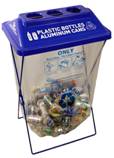 |
Connecticut cities and towns will soon be able to borrow recycling bins for local special events, concerts, and festivals. The CT Department of Energy and Environmental Protection (DEEP) recently received an award of 200 ClearStream bins from Keep America Beautiful and the Anheuser-Busch Foundation. The bins will be distributed to regional groups across the state which will act as lending hubs for municipalities and organizations to borrow the bins. DEEP anticipates that this will help provide some of the necessary infrastructure to capture valuable bottles and cans from the waste stream. For more information on the special event bin lending program, contact Chris Nelson at chris.nelson@ct.gov or 860-424-3454.
Connecticut DEEP Recycling Sees Benefits of Social Media
The Recycling Program at the Connecticut Department of Energy and Environmental Protection (DEEP) recently became the agency's fourth program to have its own Facebook page. DEEP's other Facebook pages and Twitter accounts have been active for some time, and the new DEEP Recycling Facebook page will allow greater flexibility in providing information to Connecticut residents on topics of reuse, recycling and composting.
"We're looking forward to connecting with residents who would rather communicate on-line," said Chris Nelson, supervisor of DEEP's Source Reduction and Recycling Program. "We hope to increase awareness of recycling and other sustainable materials management strategies."
The Facebook page was launched to celebrate Connecticut Recycles Day, in coordination with an effort to promote E-waste recycling in Connecticut.
DEEP Recycling has also just published a new web page on Using Social Media to Promote Recycling. The page was developed to provide some general information for municipal recycling coordinators on how to use different forms of social media to promote recycling, including Facebook, Twitter, Flickr and Blogger. The Social Media page is part of DEEP's on-line Municipal Recycling Resource Center.
Debris Management Planning Proves Useful During Storm Clean-Ups
Connecticut's Debris Management Plan and associated stand-by state contracts for debris removal and monitoring of debris removal operations proved useful when Tropical Storm Irene passed through Connecticut on August 28th, followed by Winter Storm Alfred on October 29th.
Prior to and just after the storms, the Connecticut Department of Energy and Environmental Protection (DEEP) posted guidance for municipalities on its Webpage. Governor Malloy activated the stand-by contracts and mobilized the Inter-agency Debris Management Task Force (IDMTF) to lead the management of storm-generated debris. The IDMTF is comprised of several staff from DEEP as well as multiple other state agencies. The IDMTF serves as a central support to the state's Emergency Operations Center by working through the Debris Management Plan's pre/post event timeline of related activities and action items.
The task force supports requests for assistance from municipalities and state agencies by directing requests to the State's stand-by contractors AshBritt and SAIC/BDR, the Connecticut Department of Transportation, the National Guard, or the utility companies.
The most recent storm generated over four million cubic yards of clean woody debris, presenting a challenge from a materials management perspective. Connecticut is working with its contractors and also with its municipalities to identify reuse options (e.g., creation of mulch) and/or composting options for this material after it is chipped.
The biggest lesson learned is that planning at both the state and municipal level is the best assurance of an efficient, orderly, and documented recovery, with documentation being key for eligible FEMA reimbursement. The state plans, contracts, and associated guidance are available at DEEP's Disaster Debris Management website.
Wood chip pile at the Town of West Hartford's Debris Management Site
|
|
|
ADVISORY MEMBER NEWS
WeRecycle! Assists with Disaster Relief in Flood Ravaged Areas of New York
 |
Following the devastating floods in New York's Southern Tier in September, WeRecycle! worked with local, state and federal officials to provide free electronics recycling opportunities and keep more than 150,000 pounds of water damaged electronics from entering New York's waste stream.
During the six week effort, culminating in early October, the company established four fixed collection sites in Broome and Tioga Counties, and collected materials curbside to the greatest extent possible. The materials collected–seven tractor trailers loads in all — were transported to WeRecycle!'s Mt. Vernon, NY facility for recycling.
"There was no question whether or not we were going to help our fellow New Yorkers out," said Mick Schum, President of WeRecycle! "Having these computers, TVs and other electronics diverted from the solid waste stream means less of a strain on the already fragile infrastructure in these towns. We were glad we could help in some way."
WeRecycle! made weekly trips, beginning the second week in September, to Owego, Vestal and Endicott to aid in the cleanup. Many residents lost valuable items from their homes, including electronics, due to water damage. In addition to bringing supplies into the area, a major effort is also being put forth to dispose of the water ruined items.
The effort was led by WeRecycle!'s Field Application Engineer, Carlos Rosado. "The residents of Tioga and Broome counties were in desperate need of assistance. The damage was immense and we are happy we could jump in provide assistance," said Rosado.
3,000 Pounds of CDs, DVDs and VCR Tapes Collected from Special Recycling Event
From October 3rd to November 15th, the Centre County Solid Waste Authority offered an opportunity for residents to recycle their old CDs, DVDs and VCR tapes. We are pleased to announce that we collected over 3,000 pounds of these items for recycling. That's 3,000 pounds diverted from a landfill. We want to thank our residents for participating in this special collection event and hope to have similar events in the future. Contact us by e-mail for more information.
OF GENERAL INTEREST
Reducing Paper Use and Protecting Local Businesses
 |
A leading advocate of recycling once said that, "'Reduce' comes before 'Reuse' and 'Recycle'." In that spirit, the Yellow Pages industry is pleased to provide residents across the Northeast and around the country with a simple way to reduce the number of directories they receive — or to stop delivery of directories altogether.
YellowPagesOptOut.com provides communities with a convenient and secure way to help limit or stop the delivery of directories — at no cost to taxpayers or local governments. Customizing phone directory delivery has never been easier. This publisher-funded consumer choice program ensures that Main Street businesses can still reach those who want to buy local and that those who need a printed directory still get one.
YellowPagesOptOut.com is the only Website endorsed by directory publishers nationwide to collect delivery requests as part of an overall sustainability initiative. Along with reduced trim sizes, more efficient manufacturing and a general decline in the number of directories distributed, the opt-out Website has contributed to a 35 percent reduction in the amount of paper used by the industry since 2007. (More information may be found in the Local Search Association's 2011 Sustainability Report.)
In fact, according to the 2009 EPA Municipal Solid Waste report, Yellow Pages directories represent only 0.3 percent of the solid waste stream, significantly less than newspapers (3.2 percent), office paper (2.2 percent) and standard mail (1.9 percent).
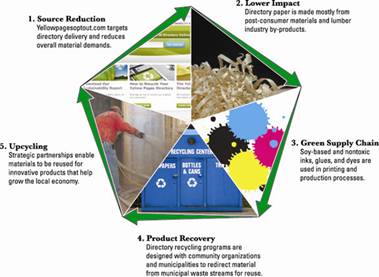 |
The initiative to lower the carbon footprint of printed directories has been moving forward for 15 years. Among the initiative's reforms are the use of soy-based and non-toxic inks, glues and dyes used in the printing, and production processes for directories. In addition, directory paper is made mostly from post-consumer materials and lumber by-products. As a result, directories are easily recyclable.
Yellow Pages remain a significant link between communities and the local small businesses that support them. According to a 2010 Local Media Tracking study, seven out of ten consumers used a print directory at least once in the past year to find a local business. That is keeping the local economy on Main Street running, and that is why it is key to keep directories in the hands of the many families who use them.
With all of these great environmental and economic strides by the Yellow Pages industry, more can be done — so please help us help you! By promoting a link to www.YellowPagesOptOut.com on your Websites, you can get the message out that directory choice is available throughout the country. Please consider adding a link to your Website so that visitors can make their own choices. In fact, we can provide an easy-to-use graphic for your Website.
Do you have a suggestion or question? Please feel free to contact us.


